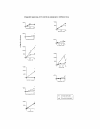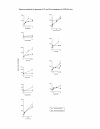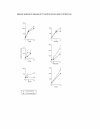Comparison of the responses of the chorda tympani and glossopharyngeal nerves to taste stimuli in C57BL/6J mice
- PMID: 12617752
- PMCID: PMC153500
- DOI: 10.1186/1471-2202-4-5
Comparison of the responses of the chorda tympani and glossopharyngeal nerves to taste stimuli in C57BL/6J mice
Abstract
Background: Recent progress in discernment of molecular pathways of taste transduction underscores the need for comprehensive phenotypic information for the understanding of the influence of genetic factors in taste. To obtain information that can be used as a base line for assessment of effects of genetic manipulations in mice taste, we have recorded the whole-nerve integrated responses to a wide array of taste stimuli in the chorda tympani (CT) and glossopharyngeal (NG) nerves, the two major taste nerves from the tongue.
Results: In C57BL/6J mice the responses in the two nerves were not the same. In general sweeteners gave larger responses in the CT than in the NG, while responses to bitter taste in the NG were larger. Thus the CT responses to cyanosuosan, fructose, NC00174, D-phenylalanline and sucrose at all concentrations were significantly larger than in the NG, whereas for acesulfame-K, L-proline, saccharin and SC45647 the differences were not significant. Among bitter compounds amiloride, atropine, cycloheximide, denatonium benzoate, L-phenylalanine, 6-n-propyl-2-thiouracil (PROP) and tetraethyl ammonium chloride (TEA) gave larger responses in the NG, while the responses to brucine, chloroquine, quinacrine, quinine hydrochloride (QHCl), sparteine and strychnine, known to be very bitter to humans, were not significantly larger in the NG than in the CT.
Conclusion: These data provide a comprehensive survey and comparison of the taste sensitivity of the normal C57BL/6J mouse against which the effects of manipulations of its gustatory system can be better assessed.
Figures








Similar articles
-
Sense of taste in a new world monkey, the common marmoset: recordings from the chorda tympani and glossopharyngeal nerves.J Neurophysiol. 2002 Aug;88(2):579-94. doi: 10.1152/jn.2002.88.2.579. J Neurophysiol. 2002. PMID: 12163511
-
Primate sense of taste: behavioral and single chorda tympani and glossopharyngeal nerve fiber recordings in the rhesus monkey, Macaca mulatta.J Neurophysiol. 1997 Feb;77(2):978-93. doi: 10.1152/jn.1997.77.2.978. J Neurophysiol. 1997. PMID: 9065862
-
Taste-responsive neurons of the glossopharyngeal nerve of the rat.J Neurophysiol. 1991 Jun;65(6):1452-63. doi: 10.1152/jn.1991.65.6.1452. J Neurophysiol. 1991. PMID: 1875254
-
Chorda tympani responses in two inbred strains of mice with different taste preferences.Physiol Behav. 1999 Aug;67(2):287-97. doi: 10.1016/s0031-9384(99)00071-2. Physiol Behav. 1999. PMID: 10477061 Review.
-
[Progress in the effects of injury and regeneration of gustatory nerves on the taste functions in animals].Sheng Li Xue Bao. 2014 Oct 25;66(5):519-27. Sheng Li Xue Bao. 2014. PMID: 25331997 Review. Chinese.
Cited by
-
Functional characterization of the heterodimeric sweet taste receptor T1R2 and T1R3 from a New World monkey species (squirrel monkey) and its response to sweet-tasting proteins.Biochem Biophys Res Commun. 2012 Oct 19;427(2):431-7. doi: 10.1016/j.bbrc.2012.09.083. Epub 2012 Sep 20. Biochem Biophys Res Commun. 2012. PMID: 23000410 Free PMC article.
-
The search for mechanisms underlying the sour taste evoked by acids continues.Chem Senses. 2010 Sep;35(7):545-7. doi: 10.1093/chemse/bjq044. Epub 2010 Jul 6. Chem Senses. 2010. PMID: 20605873 Free PMC article.
-
Parallel neural pathways control sodium consumption and taste valence.Cell. 2023 Dec 21;186(26):5751-5765.e16. doi: 10.1016/j.cell.2023.10.020. Epub 2023 Nov 20. Cell. 2023. PMID: 37989313 Free PMC article.
-
Bitter-responsive gustatory neurons in the rat parabrachial nucleus.J Neurophysiol. 2009 Mar;101(3):1598-612. doi: 10.1152/jn.91168.2008. Epub 2009 Jan 7. J Neurophysiol. 2009. PMID: 19129294 Free PMC article.
-
Allelic variation of the Tas1r3 taste receptor gene selectively affects taste responses to sweeteners: evidence from 129.B6-Tas1r3 congenic mice.Physiol Genomics. 2007 Dec 19;32(1):82-94. doi: 10.1152/physiolgenomics.00161.2007. Epub 2007 Oct 2. Physiol Genomics. 2007. PMID: 17911381 Free PMC article.
References
-
- Chandrashekar J, Mueller KL, Hoon MA, Adler E, Feng L, Guo W, Zuker CS, Ryba NJ. T2Rs function as bitter taste receptors. Cell. 2000;100:703–11. - PubMed
-
- Hoon MA, Adler E, Lindemeier J, Battey JF, Ryba NJ, Zuker CS. Putative mammalian taste receptors: a class of taste-specific GPCRs with distinct topographic selectivity. Cell. 1999;96:541–51. - PubMed
-
- Adler E, Hoon MA, Mueller KL, Chandrashekar J, Ryba NJ, Zuker CS. A novel family of mammalian taste receptors. Cell. 2000;100:693–702. - PubMed
Publication types
MeSH terms
Substances
Grants and funding
LinkOut - more resources
Full Text Sources
Other Literature Sources

